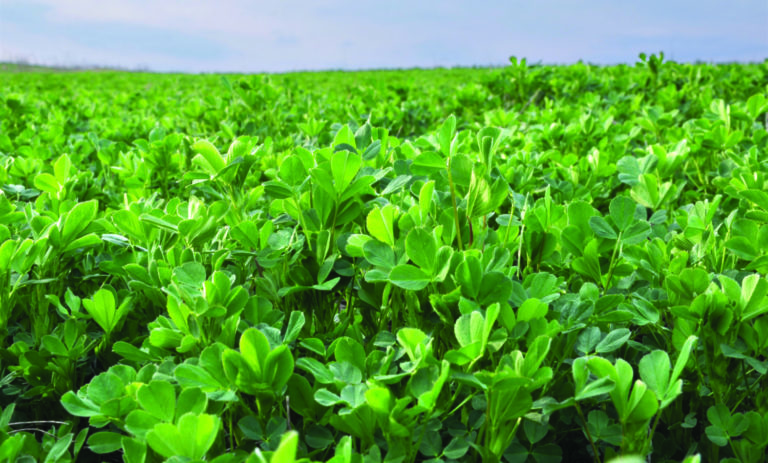
Raking alfalfa and making hay: tips for alfalfa leaf retention.
July 2021
A large percentage of an alfalfa crop’s nutritional value is in its leaves, which is important to keep in mind during the haymaking process. Maximizing leaf retention and getting the highest return on investment (ROI) from your alfalfa crop requires the right combination of equipment and attention to crop and environmental conditions while raking alfalfa.
Why is alfalfa leaf retention important?
First, why is leaf retention so important in producing a high-value alfalfa crop? An alfalfa plant’s leaves are where most of its digestible nutrients and protein reside, versus the stems that primarily comprise fiber and lignin, which in high levels can actually impede alfalfa digestibility and palatability.
“Part of the hay quality issue is not only consuming enough hay, but also being able to digest that hay and get the nutrients” said Bruce Anderson, University of Nebraska Extension forage specialist and professor emeritus. “That’s often determined by the fiber content of the hay, which influences how much they can consume and how acceptable and palatable the hay is to the animals.”
The more leaves you can retain when raking alfalfa the better. And a higher-value alfalfa crop with the right balance of fiber and nutrients will ultimately contribute to higher feed efficiency in the cattle that consume it. Consider these three tips to improve leaf retention.
Watch the weather and harvest timing to minimize alfalfa leaf loss.
Before you even turn a wheel in the field, maximizing alfalfa leaf retention starts with an eye on both the weather and crop conditions. When a crop is too dry, leaves are more easily lost at each step in the haymaking process.
Most forage crops are around 75% to 80% moisture when cut, then dry down to 14% to 18% to bale. If you are below the low end of those crop moisture ranges, you risk leaf loss during the baling process. But if you harvest your crop at moisture levels much higher than those ideal ranges, you run the risk of molding and spoilage later on. Those conditions can also cause leaf loss and quality degradation.
Producing baleage or haylage can help trim your worries about leaf loss given how wet the forage crop is when cut and baled, usually from 40% to 60% moisture. Producing haylage or baleage bales and wrapping them in plastic will not only help maintain the nutrients found in the leaves, but also promote the ensiling process to prevent the oxygen infiltration that causes spoilage when stored over long periods of time.
Harvest and rake alfalfa at the right time.
Consider your equipment options, especially as it relates to timing. University of Missouri Extension experts say, once hay moisture levels sink below about 40%, anywhere from 10% to 25% of total forage dry matter can be lost during field operations like raking.
These operations can contribute directly to leaf loss and a decrease in hay quality during the haymaking process, making it important to conduct these steps before moisture levels have decreased. For example, try to rake alfalfa when moisture levels are on the higher side of the optimal range — above the 40% threshold for alfalfa.
Raking alfalfa at optimal moisture levels can help reduce leaf loss and an imbalance between high-fiber stems and high-nutrient leaves.
Bale and store in optimal conditions to maximize alfalfa leaf retention.
Even though there are defined optimal crop moisture ranges for mowing, tedding and raking alfalfa hay, the exact moisture level is wider when it comes to baling. At the lower end of the normal range for baling — as low as 12% moisture — risk of leaf loss increases, but this drier hay is easier to sustain in long-term storage.
Baled at higher levels — up to 20% — alfalfa hay will have better leaf retention but may be more susceptible to mold and spoilage. To help prevent storage losses from spoilage, wrap bales tightly with plastic wrap. Also, producing smaller-diameter bales with 20% crop moisture can cut down on spoilage as the heat can quickly dissipate from inside the bale.
Achieving optimal alfalfa leaf retention with the right combination of production strategies and equipment can help you maximize the ROI of your crop. Contact your forage agronomist to zero in on the right strategies for your operation.
